
RADIOCOMANDO BIDIREZIONALE TX31WL/3 TX31WL/5
WIRELESS BIDIRECTIONAL REMOTE CONTROL TX31WL/3 TX31WL/5
TELECOMMANDE RADIO BIDIRECTIONELLE TX31WL/3 TX31WL/5
ITALIANO
CARATTERISTICHE TECNICHE
• Alimentazione ............................ 1 pila Lithium/Manganese Dioxide
3V (a corredo) - Formati: CR2 (IEC);
5046LC (ANSI)
• Portata radio .............................. 200 m in aria libera
• Trasmissione radio .................... a modulazione di frequenza
FSK-NB, 434 MHz.
• Autonomia ................................. 3 anni in condizioni di normale utilizzo
• Temp. di funzionamento ............ -5°C… + 55°C.
• Grado di protezione ................... IP55
• Dimensioni (l x h x p) ................. 43x63x20 mm
• Trasmissione con indicazione “stato pila”
• Contenitore in policarbonato.
MESSA IN FUNZIONE
1) Aprire il telecomando (fig. 1) svitando la vite inferiore. Inserire la pila
rispettando le polarità (fig. 2). Per l’acquisizione e la configurazione del
telecomando, fare riferimento al Manuale di Installazione del Sistema
WL30.
INSERIMENTO DELLE ETICHETTE FUNZIONE
Per inserire le etichette-funzione, staccare dal foglio plastico fornito a
corredo l’etichetta prescelta (fig. 3) ed inserirla nell’apposita sede in
funzione della programmazione associata al tasto corrispondente.
Richiudere quindi il telecomando fissando i due gusci con la vite.
SOSTITUZIONE PILE
In caso di esaurimento della pila, la centrale segnalerà la necessità di
sostituzione. Per sostituire la pila, aprire il telecomando e rimuovere la
pila, quindi sostituirla e consegnare quella scarica presso smaltitori
autorizzati. La programmazione effettuata viene mantenuta anche dopo la
sostituzione delle pile.
!!! ATTENZIONE !!! PERICOLO D’ESPLOSIONE SE LA PILA E’
SOSTITUITA CON ALTRA DI TIPO SCORRETTO. ELIMINARE LE PILE
USATE SEGUENDO LE ISTRUZIONI. Si ricorda che le pile al litio
sono a tutti gli effetti dei rifiuti speciali con codice di classificazione
CER 160605 (E.W.C. 160605) e che il loro smaltimento, a fine ciclo di
vita, è regolamentato da precise disposizioni di legge.
Fig. 1
Fig. 2
Fig. 3
ENGLISH
FRANCAIS
TECHNICAL FEATURES
• Power supply ............................. 3V Lithium/Manganese Dioxide
battery (supplied)
Formats: CR2 (IEC); 5046LC (ANSI)
• Radio range ............................... 200 m outdoors
• Radio transmission .................... frequency modulation FSK-NB,
434 MHz.
• Autonomy .................................. 3 years in conditions of standard use
• Operating temp ....................... -5°C… + 55°C.
• Degree of protection ............... IP55
• Dimensions (l x h x d) mm ...... 43x63x20 mm
• Transmission with “battery status” signal
• Polycarbonate container.
STARTING UP
1) Open the remote control handset (fig. 1) by loosening the lower screw.
Insert the battery observing polarity (fig. 2). For remote control handset
acquisition and configuration, refer to the WL30 System Installation
Manual.
APPLYING FUNCTION LABELS
To apply the function labels, remove the chosen label from the plastic
sheet supplied (fig. 3) and stick it in the appropriate position in compliance
with the function programmed in association with the corresponding
button. Close the remote control handset, joining the two parts of the shell
together using the screw.
REPLACING BATTERIES
When the battery is dead the central unit will signal the need for
replacement. To replace the battery, open the remote control handset and
remove the battery. Replace it and take the used battery to an authorised
disposal centre. The data programmed remains after battery replacement.
!!! ATTENTION !!! DANGER OF EXPLOSION IF THE BATTERY IS
REPLACED WITH ANOTHER OF THE WRONG TYPE. FOLLOW THE
INSTRUCTIONS FOR ELIMINATING USED BATTERIES. Remember
that lithium batteries are classed as special waste under code n° CER
160605 (E.W.C. 160605) and their disposal at the end of their lifecycle
is regulated by precise legal provisions.
CARACTERISTIQUES TECHNIQUES
• Alimentation ............................... 1 pile Lithium/Dioxyde de manganèse
3V (fournie) - Formats: CR2 (IEC);
5046LC (ANSI)
• Portée radio ............................... 200 m en champ libre
• Transmission radio .................... à modulation de fréquence
FSK-NB, 434 MHz.
• Autonomie ................................. 3 ans en conditions d’utilisation normale
• Temp. de fonctionnement .......... -5°C… + 55°C.
• Degré de protection ................... IP55
• Dimensions (l x h x p) ................ 43x63x20 mm
• Transmission avec indication “état pile”
• Boîtier en polycarbonate.
MISE EN SERVICE
1) Ouvrir la télécommande (fig. 1) après avoir dévissé la vis inférieure.
Introduire la pile en respectant les polarités (fig. 2). Pour la procédure
d’acquisition et de configuration de la télécommande, consulter le Manuel
d’installation du Système WL30.
INTRODUCTION DES ETIQUETTES DE FONCTION
Pour introduire les étiquettes-fonction, détacher de la feuille en plastique
fournie de série l’étiquette désirée (fig. 3) et l’introduire dans le siège
relatif en fonction de la programmation associée à la touche
correspondante. Refermer ensuite la télécommande en fixant les deux
coquilles à l’aide de la vis.
REMPLACEMENT PILES
En cas de déchargement de la pile, la centrale indiquera son état de
remplacement. Pour remplacer la pile, ouvrir la télécommande et ôter la pile, la
remplacer et remettre la pile déchargée à un centre de collecte autorisé. La
programmation de la télécommande est conservée même en cas de
remplacement des piles.
!!! ATTENTION !!! DANGER D’EXPLOSION SI LA PILE EST
REMPLACEE PAR UNE PILE D’UN AUTRE TYPE. ELIMINER LES
PILES USEES CONFORMEMENT AUX INSTRUCTIONS. Nous
rappelons que les piles au Lithium sont à tous les effets des déchets
spéciaux munis de code de classification CER 160605 (E.W.C.
160605) et que leur élimination, en fin de vie, est régie par des
dispositions de loi spécifiques.
DS80TX36-001A_LBT80144
ELKRON è un marchio commerciale di URMET S.p.A
Via Bologna,188/C – 10154 Torino (TO) – ITALY
www.urmet.com
MADE IN ITALY

BIDIREKTIONALE FUNKSTEUERUNG TX31WL/3 TX31WL/5
RADIOMANDO BIDIRECCIONAL TX31WL/3 TX31WL/5
CONTROLE REMOTO BIDIRECIONAL TX31WL/3 TX31WL/5
DEUTSCH
TECHNISCHE DATEN
• Versorgung ................................ 1 Lithium/Mangandioxyd-Batterie
3V (liegt bei) - Format: CR2 (IEC);
5046LC (ANSI)
• Funkbereich ............................... 200 m freier Raum
• Funkübertragung ....................... mit Frequenzmodulation
FSK-NB, 434 MHz.
• Autonomie ................................. 3 Jahre bei normaler Anwendung
• Betriebstemperatur .................... -5°C… + 55°C.
• Schutzgrad ................................ IP55
• Abmessungen (l x h x p) ............ 43x63x20 mm
• Übertragung mit Anzeige “Batteriestatus”
• Behälter aus Polykarbonat.
INBETRIEBNAHME
1) Die unteren Schrauben lösen und die Fernsteuerung (Abb. 1) öffnen.
Beim Einlegen der Batterie auf richtige Polarität achten (Abb. 2). Zur
Erfassung und Konfiguration der Fernsteuerung die Anweisungen im
Installationshandbuch des Systems WL30 befolgen.
EINSETZEN DER FUNKTIONSETIKETTEN
Zum Einsetzen den Funktionsetiketten das gewünschte Etikett von der
Plastikfolie nehmen (Abb. 3) und in die Taste der dazugehörigen
Programmierung einfügen. Die Fernsteuerung schließen und die beiden
Schalen mit den Schrauben befestigen.
AUSTAUSCH DER BATTERIE
Ist die Batterie leer, zeigt die Zentrale an, dass sie ausgetauscht werden muss.
Dazu die Fernsteuerung öffnen, die Batterie herausnehmen und durch eine neue
ersetzen. Verbrauchte Batterie bei autorisierten Entsorgestellen abgeben. Die
Programmierung bleibt auch nach Austausch der Batterie erhalten.
!!! ACHTUNG !!! ES BESTEHT EXPLOSIONSGEFAHR, FALLS DIE
BATTERIE DURCH EINE NICHTGEEIGNETE ERSETZT WIRD.
VERBRAUCHTE BATTERIEN SIND GEMÄSS DEN ANWEISUNGEN ZU
ENTSORGEN. Wir weisen besonders darauf hin, dass es sich bei
Lithiumbatterien in jeder Hinsicht um Sondermüll mit dem
Klassifizierungskodex CER 160605 (E.W.C. 160605) handelt und dass
die Entsorgung nach ihrem Lebensende durch präzise
Gesetzesvorschriften geregelt ist.
Fig. 1
Fig. 2
Fig. 3
ESPANOL
PORTUGUES
CARACTERÍSTICAS TÉCNICAS
• Alimentación .............................. 1 pila Lithium/Manganeso Dioxide
3V (en dotación) - Formatos: CR2 (IEC);
5046LC (ANSI)
• Alcance radio ............................. 200 m en aire libre
• Trasmisión radio ........................ de modulación de frecuencia
FSK-NB, 434 MHz.
• Autonomía ................................. 3 años en condiciones de normal
utilización
• Temp. de funcionamiento .......... -5°C… + 55°C.
• Nivel de protección .................... IP55
• Dimensiones (l x h x p) .............. 43x63x20 mm
• Trasmisión con indicación “condiciones pila”
• Contenedor de policarbonato.
PUESTA EN FUNCIÓN
1) Abra el telemando (fig. 1) soltando el tornillo inferior. Introduzca la pila
respetando las polaridades (fig. 2). Para adquirir y configurar el
telemando, haga referencia a Manual de Instalación del Sistema WL30.
INTRODUCCIÓN DE LAS ETIQUETAS FUNCIÓN
Para introducir las etiquetas-función, quite del papel de plástico en
dotación la etiqueta escogida (fig. 3) y la introduzca en la específica
rendija en función de la programación asociada al pulsador
correspondiente. Luego vuelva a cerrar el telemando fijando los dos
cascos con el tornillo.
SUSTITUCIÓN PILAS
En caso de descarga de la pila, la centralita señaliza la necesidad de
sustitución. Para sustituir la pila, abra el telemando y quite la pila, luego la
sustituya y entregue la descargada a los centros de eliminación
autorizados. La programación efectuada se mantiene incluso después de la
sustitución de las pilas.
¡¡¡ CUIDADO !!! PELIGRO DE EXPLOSIÓN SI LA PILA SE HA
SUSTITUÍDO CON OTRA DE TIPO NO IDÓNEO. ELIMINE LAS PILAS
UTILIZADAS CUMPLIENDO CON LAS INSTRUCCIONES. Recordamos
que las pilas de litio son, a todos los efectos, desperdicios
especiales con código de clasificación CER 160605 (E.W.C. 160605) y
que su eliminación, a final de su duración, está reglamentada por
precisas disposiciones de ley.
CARACTERÍSTICAS TÉCNICAS
• Alimentação ............................... 1 pilha Lithium/Manganese Dioxide
3V (fornecida) - Formatos: CR2 (IEC);
5046LC (ANSI)
• Potência rádio ............................ 200 m ao ar livre
• Trasmissão rádio ....................... com modulção de frequência.
FSK-NB, 434 MHz.
• Autonomia ................................. 3 anos em condições de uso normal
• Temp. de funcionamento ........... -5°C… + 55°C.
• Grau de proteção ....................... IP55
• Dimensões (l x h x p) ................. 43x63x20 mm
• Trasmissão com a indicação “estado da pilha”
• Caixa de policarbonato.
ACIONAMENTO
1) Abrir o controle remoto (fig. 1) desparafusando o parafuso inferior.
Introduzir a pilha respeitando a polaridade (fig. 2). Para a aquisição e a
configuração do controle remoto, consultar o Manual de Instalção do
Sistema WL30.
INTRODUÇÃO DAS ETIQUETAS DAS FUNÇÕES
Para introduzir as etiquetas-funções, destacar da folha de plástico
fornecida a estiqueta escolhida (fig. 3) e introduzi-la na sede apropriada
em função da programação associada à tecla correspondente. Fechar o
controle remoto fixando as duas partes com o parafuso.
SUBSTITUIÇÃO DAS PILHAS
Em caso de esgotamento da pilha, a central sinalizará a necessidade da
substituição. Para substituir a pilha, abrir o controle remoto e remover a
pilha, então substituí-la e entregar aquela descarregada aos depositos
autorizados. A programação efetuada é mantida mesmo depois da
substituição das pilha.
!!! ATENÇÃO !!! PERIGO DE EXPLOSÃO SE A PILHA FOR
SUBSTITUÍDA POR OUTRA DO TIPO NÃO CORRETO. ELIMINAR AS
PILHAS USADAS SEGUINDO AS INSTRUÇÕES. Lembre-se que as
pilhas de lítio são para todos os efeitos lixo especial, com código de
classificação CER 160605 (E.W.C. 160605) e que a eliminação, ao
final da suas vida útil, é regulamentada por disposições precisas da
lei.
DS80TX36-001A_LBT80144
ELKRON è un marchio commerciale di URMET S.p.A
Via Bologna,188/C – 10154 Torino (TO) – ITALY
www.urmet.com
MADE IN ITALY
-
 1
1
-
 2
2
in altre lingue
- English: Elkron TX31WL/5 Installation guide
- français: Elkron TX31WL/5 Guide d'installation
- español: Elkron TX31WL/5 Guía de instalación
- Deutsch: Elkron TX31WL/5 Installationsanleitung
- português: Elkron TX31WL/5 Guia de instalação
Documenti correlati
-
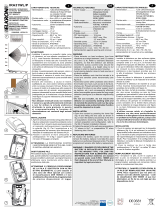 Elkron IRA31WL/P Guida d'installazione
Elkron IRA31WL/P Guida d'installazione
-
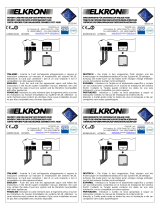 Elkron MU30 Guida d'installazione
Elkron MU30 Guida d'installazione
-
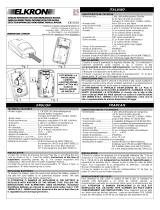 Elkron IRA31WL Guida d'installazione
Elkron IRA31WL Guida d'installazione
-
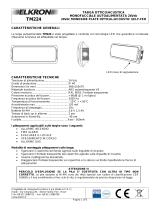 Elkron TM224 Guida d'installazione
Elkron TM224 Guida d'installazione
-
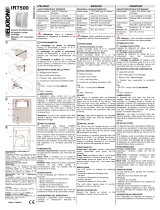 Elkron IRT500 Guida d'installazione
Elkron IRT500 Guida d'installazione
-
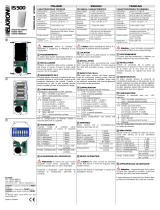 Elkron IS500 Guida d'installazione
Elkron IS500 Guida d'installazione
-
Elkron ER3000-RF Manuale utente
-
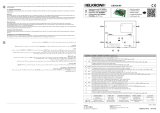 Elkron ER700-RF Guida d'installazione
Elkron ER700-RF Guida d'installazione
-
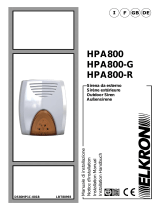 Elkron HPA800 Guida d'installazione
Elkron HPA800 Guida d'installazione
-
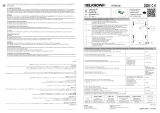 Elkron IT700-4G Guida d'installazione
Elkron IT700-4G Guida d'installazione










